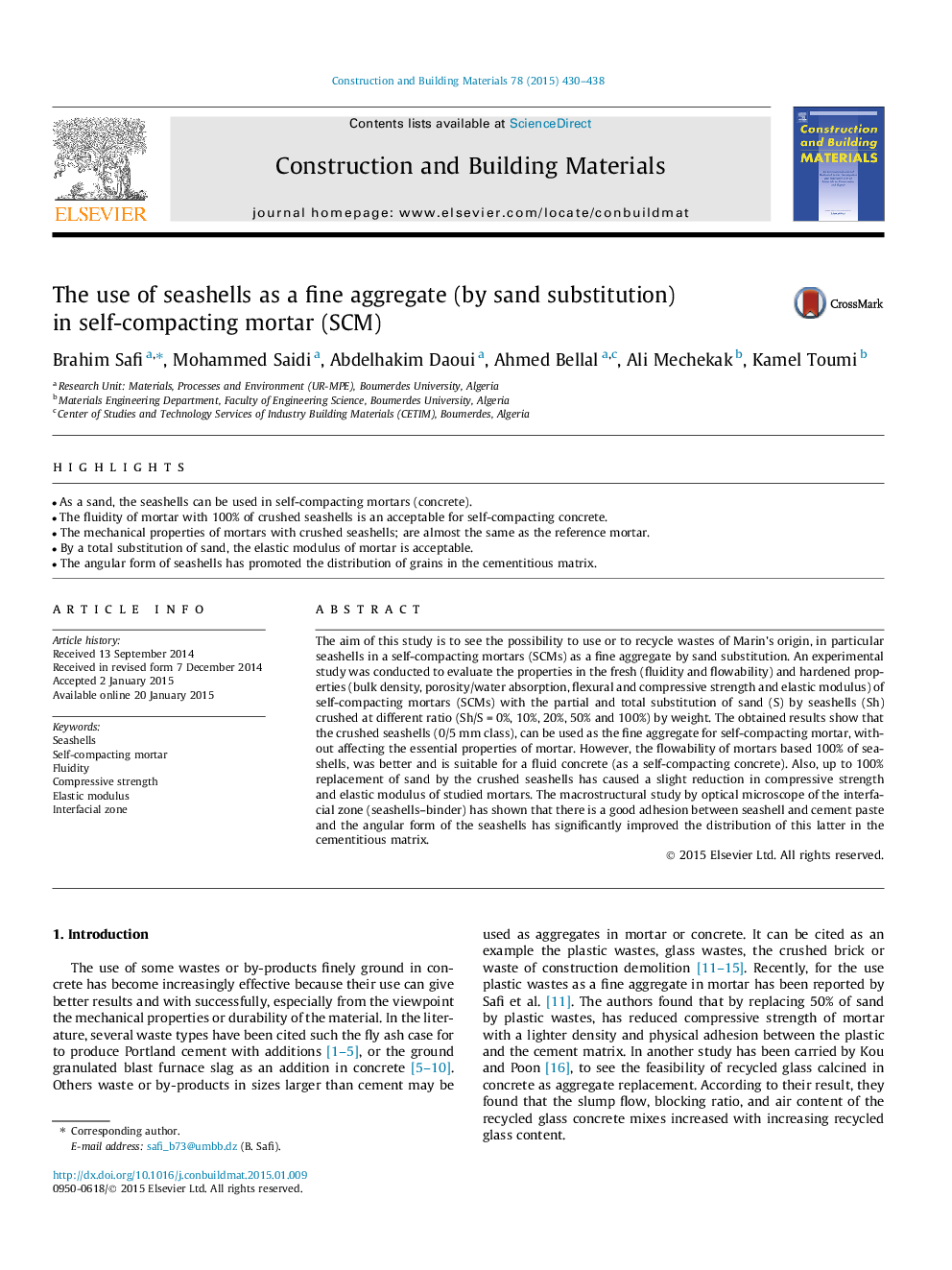| کد مقاله | کد نشریه | سال انتشار | مقاله انگلیسی | نسخه تمام متن |
|---|---|---|---|---|
| 257130 | 503577 | 2015 | 9 صفحه PDF | دانلود رایگان |

• As a sand, the seashells can be used in self-compacting mortars (concrete).
• The fluidity of mortar with 100% of crushed seashells is an acceptable for self-compacting concrete.
• The mechanical properties of mortars with crushed seashells; are almost the same as the reference mortar.
• By a total substitution of sand, the elastic modulus of mortar is acceptable.
• The angular form of seashells has promoted the distribution of grains in the cementitious matrix.
The aim of this study is to see the possibility to use or to recycle wastes of Marin’s origin, in particular seashells in a self-compacting mortars (SCMs) as a fine aggregate by sand substitution. An experimental study was conducted to evaluate the properties in the fresh (fluidity and flowability) and hardened properties (bulk density, porosity/water absorption, flexural and compressive strength and elastic modulus) of self-compacting mortars (SCMs) with the partial and total substitution of sand (S) by seashells (Sh) crushed at different ratio (Sh/S = 0%, 10%, 20%, 50% and 100%) by weight. The obtained results show that the crushed seashells (0/5 mm class), can be used as the fine aggregate for self-compacting mortar, without affecting the essential properties of mortar. However, the flowability of mortars based 100% of seashells, was better and is suitable for a fluid concrete (as a self-compacting concrete). Also, up to 100% replacement of sand by the crushed seashells has caused a slight reduction in compressive strength and elastic modulus of studied mortars. The macrostructural study by optical microscope of the interfacial zone (seashells–binder) has shown that there is a good adhesion between seashell and cement paste and the angular form of the seashells has significantly improved the distribution of this latter in the cementitious matrix.
Journal: Construction and Building Materials - Volume 78, 1 March 2015, Pages 430–438